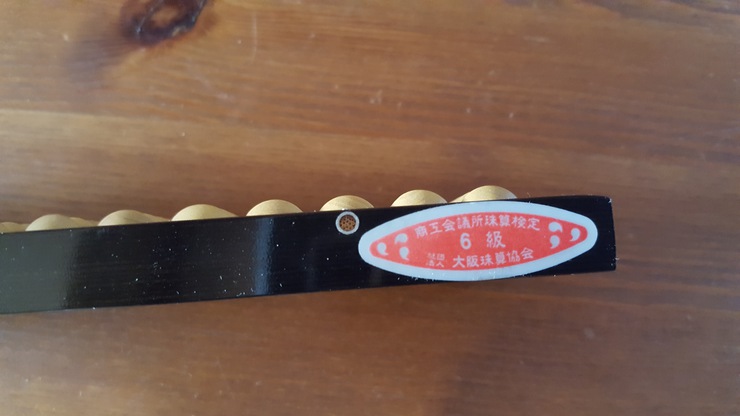soroban — そろばん
Sat, May 5, 2018For about two years I lived in Japan. It was a long time ago, and it is now a smaller fraction of my life than an hour is of a day. Then again, a lot can happen in an hour, and there are facets of who I am today that I can trace back to that time.
Living and working in Japan was both wonderful and difficult. I remember commuting ninety minutes each morning and evening in stifling trains so full at times that I could find nothing to hold onto. Reading offered some relief, but often there was too little room even to hold a book at a legible distance. I would exit those trains with a shirt soaked in sweat, not all of which was my own.
But I also remember peaches so ripe they exploded like water balloons when you bit into them. And, perhaps unpredictably, I remember the volunteer instructors at the Osaka Chamber of Commerce and Industry who gave up their time on Saturday mornings to teach foreigners how to use an abacus. Some of them spoke little English, and I spoke less Japanese, but somehow I always felt a connection to those kind people who rightly believed that what they were doing could help outsiders feel more welcome in their culture. Math and generosity bridged the linguistic divide, and so I learned to flick my thumb and forefinger until I could add and subtract reasonably large numbers with gratifying ease.
I even went so far as to register for an exam to get an official certification. I practised until I felt confident of my chances, but there was one exam-day surprise that I was not ready for: Nearly all of the other test-takers were elementary school children. The few adults standing in line outside the exam room were all foreigners. Probably all from the Chamber of Commerce classes. I had trouble fitting at the desk. And the Japanese children seemed no less surprised at my presence than I was at theirs. Surprised and amused.
Now you might be getting the impression that I’m old enough to predate hand-held calculators. Not so. Part of the intrigue of the soroban is the way it persisted in the face of digital competitors. Perhaps it does so even now, another thirty years on. It seems at least that the Osaka Chamber of Commerce may still be offering their classes.
https://sites.google.com/site/osakasoroban/abacus-classes
All these years later those lessons still stand out as one of the things I most enjoyed during my time in Japan. They gave me an anchor, something in the culture that I could readily engage with. Something to hold onto when the ride got bumpy.
Thank you, Osaka Chamber of Commerce!
Incidentally, I did pass the exam, in recognition of which I received a certificate and a sticker that I could affix to the edge of my abacus. I still have the abacus. With the sticker.
